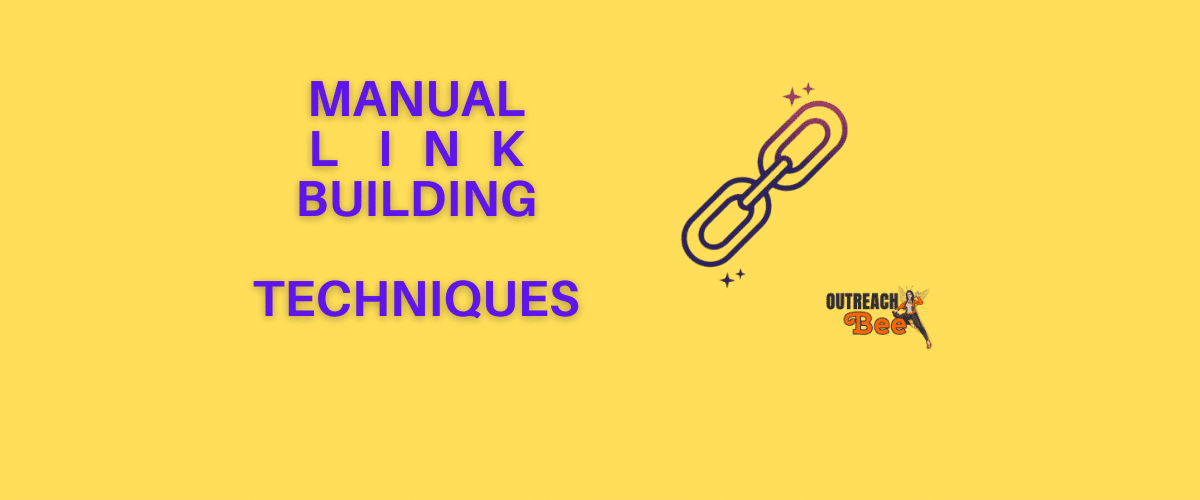To make search engine optimization effective, link building is one of the important elements. Manual link building techniques give you a lot of benefits related to ranking. But it also provides you referral traffic and builds a good reputation for your brand.
Inbound links help enhance the domain authority that can help you increase the visibility of your content in SERPs.
That is one of the reasons I chose to understand link building and to support other organizations in determining how to strengthen their exclusive link-building advertisements.
Some SEO “experts” suggest that the best way to get links in the current period is to influence them ordinarily through high-quality content. It is a pretty good start. But, if you will, consider it “table stakes.”
You could make sure that all of your links are obvious, preventing Penguin and other booklet or algorithmic Google consequences and promoting your business naturally.
However, there are a number of drawbacks to this approach which are written below:
- You will not be in control of the time and process of the link building.
- All this will take a lot of time and even more if your brand is not recognized well in the industry.
- You will not be able to predict the future of your strategy; hence you will not be able to improve it.
Instead, manual link building techniques are highly recommended, which is the right way. By using these techniques, you will have a consistent and measurable process in the future for scaling your strategies.
Before starting, keep in mind that links cannot be built anywhere. Creating bad links can damage the domain authority you have earned because google keeps looking for bad links.
Characteristics of good links are:
- The link should be related to the content and not appear out of context or place.
- It should provide even more information to the user when the user clicks on that link.
- Organize the authentic domains, with the more authentic domains, the more it is better
- A good link should be naturally integrated into anchor text. For that, you need to put anchor text into your link as well. Though it is not a smart move in result viewers can assume you want to explain the content.
- Merged within the text, therefore the link does not show up.
A link should be naturally placed in an off-site article and published by a high-quality publisher. It is one of the best considered manual link building techniques.
So what are the basic requirements to perform above?
14 Steps of Manual Link Building Techniques to Practice
Below are 14 steps of manual link building techniques that you can use for growing organic traffic to your content:
Step 1: Establishing Your Brand
Writing off-site content and then linking it to a corporate brand is possible. However, it becomes way easier if you have one or two personal brands. The benefits of a personal brand are that the off-site publisher easily accepts it, and it helps you build your audience and reputation way faster.
Start by defining yourself as a niche on social media and acquiring an initial audience. And then create and syndicate the content through those platforms. During this whole process, make sure you are connected with the audience. By doing this, you can encourage them to read and share your content for getting a new website.
Step 2: Forming Relationships
You can always connect and reach out to others no matter what industry you are in. Start with the communities related to your niche. by establishing connections and relationships, you will acquire backlinks and get in touch with people with the same passions.
Step 3: Inquire for Backlinks
Some of the times, the best thing you can do is to ask for what you need. In addition, you should inquire for links that can be incorporated into the content and ensure that you get backlinks from your niche-related websites.
Step 4: Writing Testimonials
By this, you not only benefit yourself but only support other companies too. It is a fantastic opportunity to get benefits from. Make a list of all the current purchased or used items or services. It is a good possibility to receive a link in return for a testimonial unless it’s not from a major firm like Amazon.
Step 5: Listing Your Site in Trustworthy Directories
Your business can benefit a lot from listing your website in main directories. In this way, new users will be attracted to your website, making your listing visible to the search engines. In addition, directories provide you with the opportunity to add a link to the website. Finally, these directories make acquiring indexes from big search engines for your business is a lot easier.
Step 6: Kicking Off a Blog
If you regularly write and post content on your blog, your blog will get authority will be the same as the time your content will stay useful.
Step 7: Generate an Archive of On-Site Data
It is necessary to develop an archive of on-site content within your market segment, even if you’re using your brand to publish on your firm’s domain and your web page or blog. In addition, to give content to your viewers, these examples are useful for your work. It is a gateway from which you can connect in the future and confirm that you’re a deserving writer to be included in your desired articles publications.
Step 8: Reach out to the Publishers
In the next step of manual link building techniques, you will have to decide what publications you want your content to be featured, and you will have to contact their editors. If you don’t have contact with an editor beforehand, you should go for your local publications before reaching out to the publishers with high authority.
Step 9: Pitch, Publish and Repeat
After introducing with the editor, the next step is pitching for publications with a handful of topics. To prove yourself to the editor, you have to publish your content. Hence, you will not be able to add backlinks to all articles. You can get the information of the editor of your targeted publication from their website.
Just grab any opportunity you get to publish your content, enhance your content with time. Once your content is published, the backlinks placed in your content will start giving you benefits. It is fine to always reach out to new and better publishers, but you should never cut off from your old publishers.
Step 10: Try to find out the shared backlinks with your contenders
You might observe the shared similar link with your competitors while researching on them. For evaluating the links with their sources, you can use a tool, CBLT. By this tool, you are allowed to insert data of ten companies and examine their links. You can use similar links as your competitors, and there is nothing to be afraid of.
Step 11: Using Mentions to Generate Backlinks
Consider it a way to make the most of what you already have. Someone has written about you, but they have not included a link to your website in it. What are your options now? Contact the webmaster and request them to change the mention to a backlink.
Step 12: Dead Backlinks Recovery
Link juice recovery tool (LJR) is another useful technique you can incorporate into your company. Occurrence of broken backlinks to your website as usual. It will help to restore the broken backlinks. It will create code, a .htaccess which can smoothly plug into the file, .htaccess.
Step 13: Trying to Acquire the Link Building Opportunities that are Most Relevant
Too many websites, blogs, and forums will add your backlinks; however, it is hard to look for them. So instead, you can find the required results by using a research tool by SERP.
Step 14: Keep an eye on your efforts and adjust them as needed
In last, you will need to track and modify your efforts. Examine your backlink profile with a tool like Moz’s Open Site Explorer to know which links are most valuable to you.
As your reputation grows, you will be able to reach out to publications with greater authority. Eventually, developing a network of links is considerably more strong than your first set. Try to increase the value and regularity of your articles, and keep an eye on stats to ensure a positive ROI.
Alternatives to Manual Link Building Techniques by Yourself:
No doubt these are time-consuming and long steps that may even take years to gain some reputation. Along with this, it is not an easy task to maintain a healthy relationship with your publisher. An alternative to manual link building techniques can be hiring an agency that would do manual link building for you, but you will have to be cautious.
Often, agencies build links wherever they can without considering the context or keeping the quality up to the mark, which can be harmful instead of helpful. To counter that, you should hire an agency that provides high-quality content and is related to different off-site publications. You may find it expensive, but the high-quality work and the time you will save are worth it.



The perfect way to avoid Google penalties: manual link building
The main benefits of manual Link building